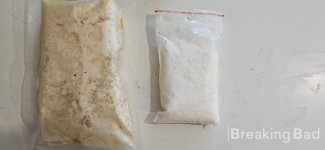HIGGS BOSSON
Expert
- Joined
- Jul 5, 2021
- Messages
- 632
- Solutions
- 1
- Reaction score
- 872
- Points
- 93
Alphamethylphenethylamine (amphetamine) synthesis
479Mb (.mp4)
1-Phenyl-2-nitropropene (P2NP) reduction to α-methylphenylethylamine by aluminium...
1-Phenyl-2-nitropropene (P2NP) reduction to α-methylphenylethylamine by aluminium...
Last edited by a moderator:

